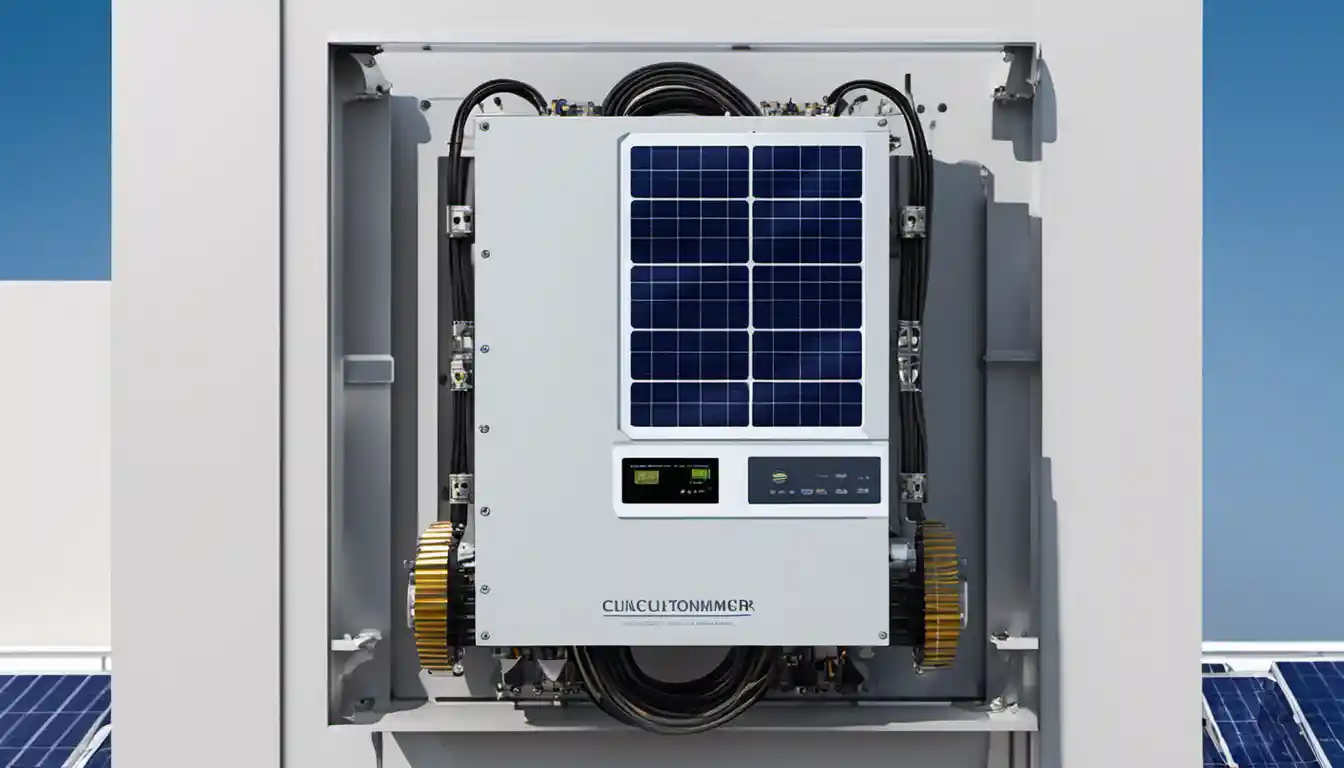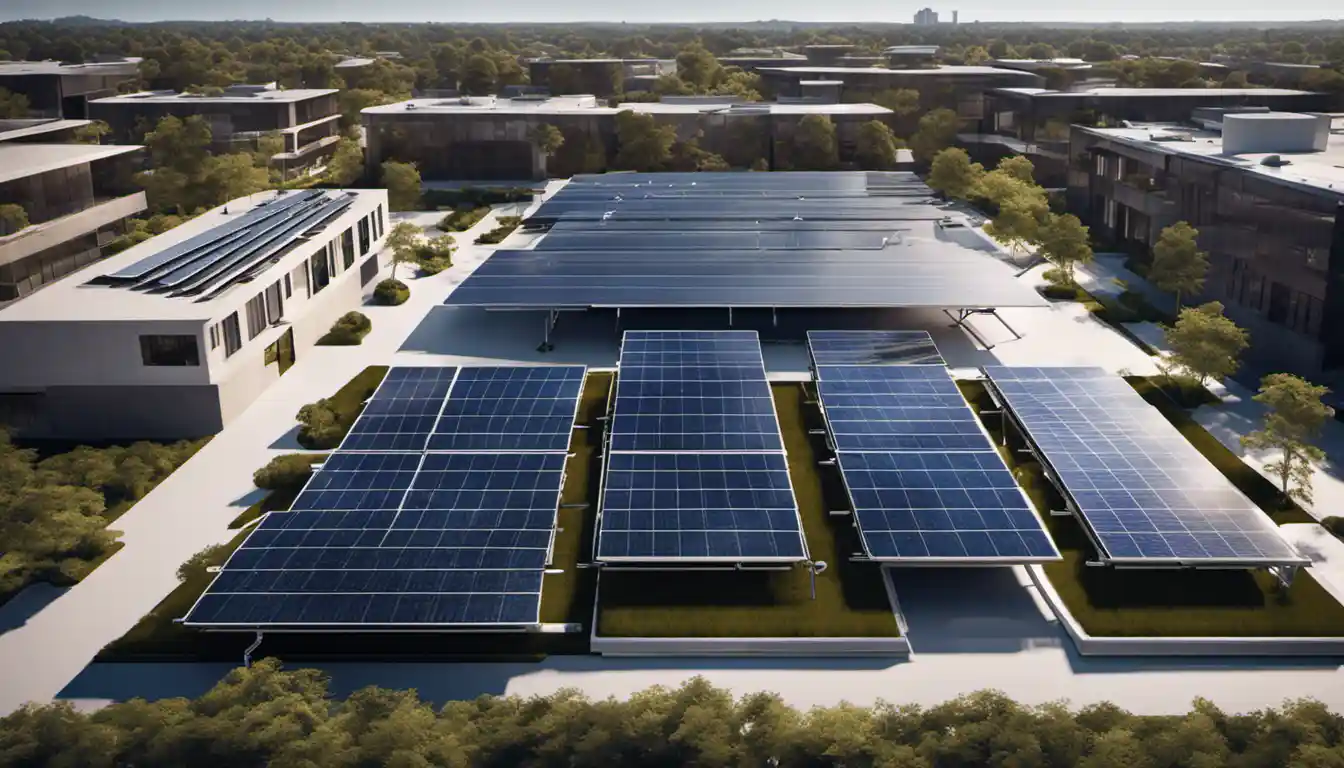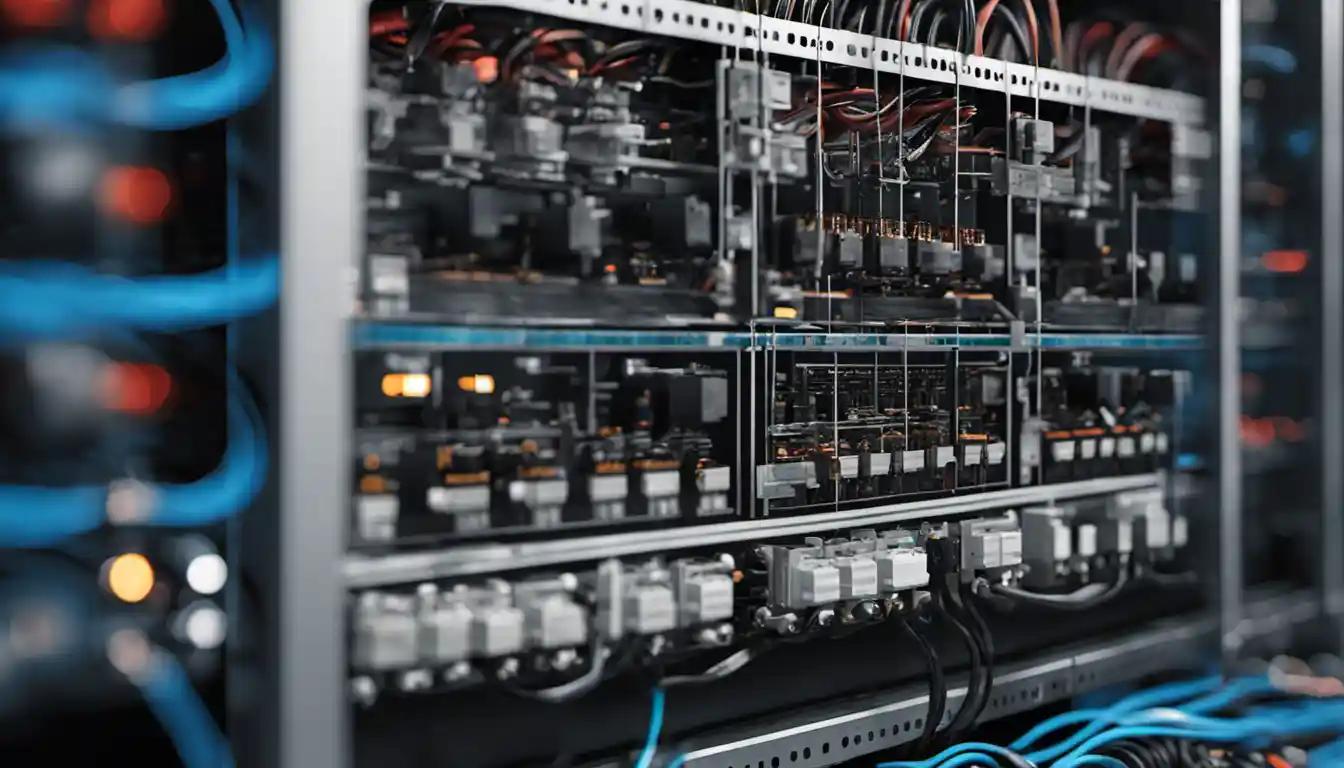Understanding Solar Energy Technologies and Inverters
A solar inverter synchronizes with the grid by matching the frequency, voltage, and phase of grid-associated electrical waveforms. It does this through a complex process of real-time adjustments, mapping the grid waveform, and timing the outputs to coincide perfectly with the grid. Thus, it allows for efficient and seamless power transfer between the solar system and the grid.
What are Inverters?
Inverters are the linchpin of any renewable energy system, they act as a bridge, connecting the energy produced by your solar power setup and your household’s electrical grid. My detailed explanation of solar inverters can shed more light on this topic.
The Role of Inverters in a Solar Energy Setup
Inverters convert the direct current (DC) generated by your solar panels into alternating current (AC) that can be used in your home. But that’s not all. Crucially for this discussion, inverters also synchronize this energy with the grid, which is why understanding ‘how does a solar inverter synchronize with grid’ is so important.
Types of Inverters and their Functioning
There are different types of inverters, including stand-alone inverters, battery inverters, and grid-tie inverters. The latter are designed to accurately match their output with the grid’s phase, voltage, and frequency.
In-Depth: Synchronization of Inverters with the Grid

What Does Synchronization Mean in the Context of Inverters and Grids?
When we ask ‘how does a solar inverter synchronize with grid’, what we’re really talking about is how the inverter aligns its AC output to match the waveform of the electricity from the grid. This ensures that the energy your solar setup produces can seamlessly integrate with the grid’s power.
How Grid-following Inverters Work
Grid-following inverters continuously monitor the grid’s sine wave and adjust their output to match it. These ‘smart’ inverters utilize cutting-edge technology to ensure there is no ‘clash’ between the energy from your solar setup and the grid.
The Role of the Electrical Grid Signal in Synchronization
An electrical grid signal plays a crucial role in the synchronization process. By providing the reference point for the inverter, it enables the inverter to adapt and match the grid conditions in real time.
Process of Switching to Produce a Synchronized Sine Wave
Inverters create a synchronized sine wave by switching on and off. These switching actions are timed to precise fractions of a second, to align perfectly with the grid waveform.
Inverter-Based Grid: A Look into The Future
The Concept and Benefits of an Inverter-Based Grid
An inverter-based grid is the future of power generation. It means a grid where most of the power is produced by inverters, rather than traditional power plants. This would result in a more flexible, reliable, and renewable power supply.
Where We Stand Now: The Current State of Inverter-Based Grids
Although this future is still shaping up, many regions have significantly increased their use of renewable, inverter-based power, as the answer to ‘how does an inverter synchronize with grid’ becomes better understood and easier to implement.
Real World Scenarios: Synchronizing Small-Scale PV Systems with the Grid

Practical Applications of Inverter-Grid Synchronization
Inverter-grid synchronization is key to integrating small-scale solar power systems into the local electricity grid. From rooftop setups to solar-powered charging stations, the unassuming inverter plays a vital role.
Common Challenges and Possible Solutions in Synchronization
However, the synchronization process isn’t always smooth sailing. Issues like grid instability and electromagnetic interference can create hurdles. But with advanced inverters and better grid infrastructure, these challenges can be overcome.
Inverters and Grid Services: A Comprehensive Overview
Understanding Grid Services
Grid services keep our electricity supply stable, reliable, and efficient. They can include frequency control, load balancing, and voltage regulation, and inverters play a key role here too.
The Integral Role of Inverters in Grid Services
When synchronized, inverters can provide these grid services, helping our power supply remain steadfast in the face of changing demand and supply conditions.
Real-World Implications of Grid Services and Inverters
In practical terms, this means that as the share of renewable inverter-based power grows, so too will our power grid’s resilience and adaptability.
Detailed Queries: Why Does Inverter Synchronization with the Grid Take Time?

A Deeper Dive into the 5 Minute Synchronization Process
While inverter-grid synchronization is pretty swift, it still takes around five minutes. Why? Well, this time is required for the inverter to ‘learn’ the grid’s waveform and align its output.
Factors that Affect the Duration of Synchronization
Multiple factors can affect synchronization duration, from inverter specifications to grid conditions. A better understanding of ‘how does an inverter synchronize with grid’, can help minimize these delays.
Ways to Optimize Inverter Synchronization Time
More advanced inverters and smarter grid infrastructure are just some of the ways we can optimize synchronization times, ensuring you can start powering your home as quickly as possible.
Extensive Outlook: Future Developments and Advance Technologies
Innovative Practices and Technologies on The Horizon
As solar energy technology races ahead, we’re seeing exciting innovations on the horizon. From better-performing inverters to fully inverter-based grids, the future is bright indeed.
Potential Impact on Inverter Synchronization and Functioning
These advances are likely to streamline and speed up synchronization, making renewable energy an even more attractive choice for our homes and businesses.
Bridging the Gap: Making Solar Power more Efficient and Reliable
By continuing to improve on ‘how does a solar inverter synchronize with grid’, we can maximize the potential of renewable energy, delivering a greener, more efficient and reliable power supply for all.
‘Demystifying solar technology and understand the intricacies of ‘how does an inverter synchronize with grid’ gets us closer to that more sustainable future. Let’s continue this journey and embrace the solar power revolution with an enlightened perspective. Here’s to a brighter tomorrow!



